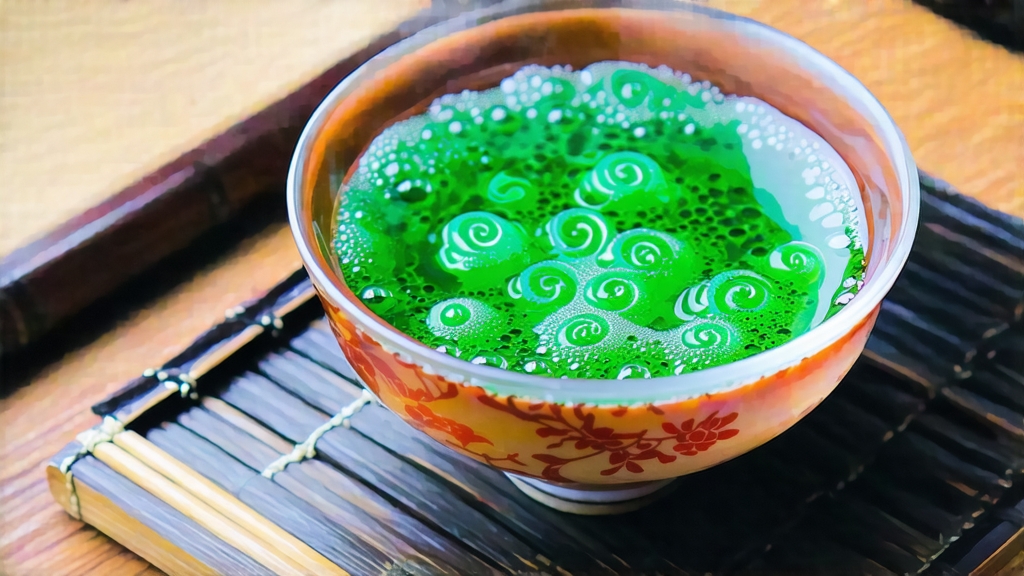
Among the pantheon of Chinese green teas, few names evoke as much poetry and precision as Biluochun. Transliterated as “Green Snail Spring,” the tea is celebrated for its tightly spiraled leaves, luminous jade liquor, and an aroma so fragrant that imperial scholars once likened it to the scent of a spring orchard after rain. To international drinkers accustomed to the grassy simplicity of Japanese sencha or the roasted depth of gunpowder, Biluochun offers a delicate paradox: it is at once feather-light and intensely aromatic, a tea that seems to capture the misty terroir of Lake Tai in every silken sip.
Historical records trace Biluochun’s emergence to the late Ming dynasty (early seventeenth century) around Dongting Mountain, an island range rising from the vast, mineral-rich waters of Lake Tai in Jiangsu Province. According to local chronicles, a tea-picking girl accidentally filled her basket with fresh buds while chasing an elusive wild tea plant hidden among flowering apricot and peach trees. The buds absorbed the orchard’s perfume, and when the village monk later pan-fired them, the resulting infusion astonished everyone with its natural fruitiness. Originally named “Xia Sha Ren Xiang” (“Scary-Fragrant”), the tea was renamed Biluochun by the Kangxi Emperor in 1699 after he found the original name too vulgar for imperial taste. The new name references the tea’s snail-like curl, its green hue, and the early-spring harvest window.
Strictly speaking, authentic Biluochun comes only from two micro-zones on Dongting Mountain: Dong Shan (East Hill) and Xi Shan (West Hill). Within these zones, clonal variations and micro-farming practices have given rise to three recognized sub-categories. “Original Bush Biluochun” is picked from seed-propagated old trees whose roots plunge directly into granite crevices; the leaves are tiny, pale, and exude a pronounced peach note. “Fruit-intercrop Biluochun” grows in orchards where tea plants share soil with plum, loquat, and bayberry, creating a natural aromatization echoed in the cup. The third style, “Lake-mist Biluochun,” is cultivated at slightly lower elevation where morning fog moderates sunlight, yielding a creamier texture and subtler fragrance. While other provinces now produce spiral-shaped green teas marketed under the same name, connoisseurs insist that only Dongting leaf carries the hallmark “three whites”—tiny silver downy tips mixed among the green coils—and the lingering sweet-water finish known as “lake charm.”
The crafting of Biluochun is a ballet of heat, timing, and fingertip sensitivity performed on the very day the buds are plucked. Picking begins before Qingming festival when each shoot consists of one unfolded leaf and a still-soft apical bud, a standard called “one flag, one spear.” The plucked shoots are spread in bamboo trays for no more than two hours, allowing surface moisture to evaporate while preserving internal enzymes. Next comes the kill-green step, unique among Chinese greens for its dual-temperature wok. The craftsman first slides the leaves onto a cast-iron pan heated to 180 °C, pressing and tossing them for precisely 45 seconds to arrest oxidation. Temperature is then dropped to 80 °C, and the real shaping begins. Using only the heel of his palm, the master applies a forward-and-backward rubbing motion that gradually curls the leaf into a tight spiral while coaxing out fragrant volatiles. A third gentle drying at 60 °C reduces residual moisture to 5 %, locking in the tea’s signature white fuzz. Veteran producers claim that the entire sequence must finish within 40 minutes; any delay dulls the bright fruit note and flattens the liquor’s jade brilliance.
Western brewers often approach green tea with boiling water and a metal infuser, habits that can annihilate Biluochun’s nuance. The traditional Suzhou method, called “seven-step infusion,” was devised to showcase the tea’s evolving layers. Begin with a tall cylindrical glass; pre-warming is optional, but rinsing with 75 °C water prevents thermal shock. Measure 3 g of tea for every 150 ml, letting the dry spirals slide down the glass wall like tiny jade springs. Upon the first pour, fill only one-third of the vessel and watch the downy tips hydrate, a spectacle locals poetically term “snow falling into jade pond.” After 30 seconds, top up with water at the same temperature and steep an